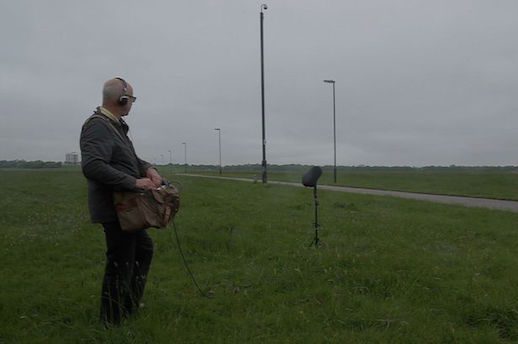Following her visit to Chris Watson‘s immersive new sound installation ‘The Town Moor: A Portrait In Sound’, Emma Warren chats to the man himself to find out more about the project’s inception

Firstly, what’s your relationship with the Town Moor?
I live quite close to it so I know it very well. My kids learnt to ride their bikes there, we’d go sledging there in the winter. Going there to record really opened my ears to the potential of it.
What’s changed since you’ve been listening to it so intently?
I know it better so I enjoy it more. I know more about the variety of the place, the habitats and the seasons. It’s fascinating learning the history of it from [documental producer] Murphy Cobbing, that really makes you engage. And it makes you realise how privileged we are to have it.
The Moor has been used continuously for a thousand years. Can you talk about the cows you recorded?
The come on in springtime, around March. The farmers choose docile animals because they’re going to be mingling with people. It’s fantastic when they first arrive. The farmer lets the back of the truck down and they just explode out onto the Town Moor, jumping about. They’ve been cooped up in barns all winter . They go mad for it. Immediately within minutes they’ve dispersed across the moor. Then they re-gather. They’re not from one herd so they have to make friends. They slowly start to amalgamate. October time they’re taken off the Town Moor. I recorded that. They have to be rounded up on quad bikes – obviously the cows don’t want to go because they’re going to be cooped up again. They’re very vocal and it’s a great sound. The bit where they came up to the accordion players was fantastic. They could hear them before they could see them and they came straight over.
The cows in your piece are listening to two accordion players…
They are very inquisitive. I found this out a long time ago when I wanted to record cattle. I lay down in the field with my microphone and cows will come straight over. You’re safe, they won’t trample you but you get really good close up sounds of cows sniffing. It must be the same with the accordions. They started approaching before the guys started to play.
Which sounds gave you particular pleasure to record?
The Lesser Water Boatmen. It was the most remarkable recording I made last year. Who’d have thought they’d be in this tiny urban pocket habitat, the size of the corner of this room, which had been planted and nurtured by people from the Wildlife Trust, in this little reed bed? Below the surface there’s this community of insects, doing their thing and singing their heads off.
Or singing something else off… [a Lesser Water Boatman creates sound by banging its penis against its chest]
I should rephrase that. And such a population, such an amazing chorus. You can hear it coming up the reed stems. That was a most remarkable sound. It was really special.
Did you know they were there?
I love working with hydrophones, it’s like fishing for sound. I thought there might be water beetles in there.
So did you know what they were straight away?
Yes, I’d heard them before. I’d heard them on The Fens (where I’d just made a radio programme about the fen raft spider) but nothing like the number that’s in Exhibition Park Lake. You’d expect to hear one or two, but there were hundreds.
Did you notice any absence of sounds, or unappealing sounds?
Police sirens, constantly. I felt I had to reflect that. There were very few recordings without police or ambulance sirens. It’s a constant reminder that you’re in the city.
Can you tell us about the Skylark that begins and ends the piece?
Shakespeare’s ‘ploughman’s clock’. They breed on the Town Moor. They broadcast their song, going up 200-300 feet and hover there for up to an hour, singing this silver stream of sound which just rains down from the sky. They’re a speck of sound that’s lost to sight. In that sense, like the sirens, you can’t fail to record it. It’s always the first sound on the moor. They start at 3am and they sing until 10pm. It’s the Town Moor’s signature sound.
What did you see on your dawn chorus walk on International Dawn Chorus Day? [a recording of which appears at the end of The Town Moor]
Relatively common birds: Skylark, all the Thrushes, Blackbird, Robin, Wren, Dunnock, Chaffinch. There were migrants there, which is very topical: Warblers from sub-Saharan Africa that’ve flown thousands of miles to nest on the Town Moor, like Willow Warblers and Whitethroats. It’s an international perspective, which I really enjoyed. The Moor is an important place for everyone in Newcastle no matter where they’re from.
What did you want people to get from the piece?
It’s a great privilege to present my work here. Normally I have to fly for 11 hours before I start work. It’s great to do something that I can see from the loft window of my house. You don’t need any great artistic justification with sound; you just sit here in the dark and you get it. It’s very powerful, almost visceral.
‘The Town Moor’ by Chris Watson is on at The Gallery at Tyneside Cinema, Newcastle until 24 July 2016, every hour between 10am and 5pm and Sundays 11am to 5pm.